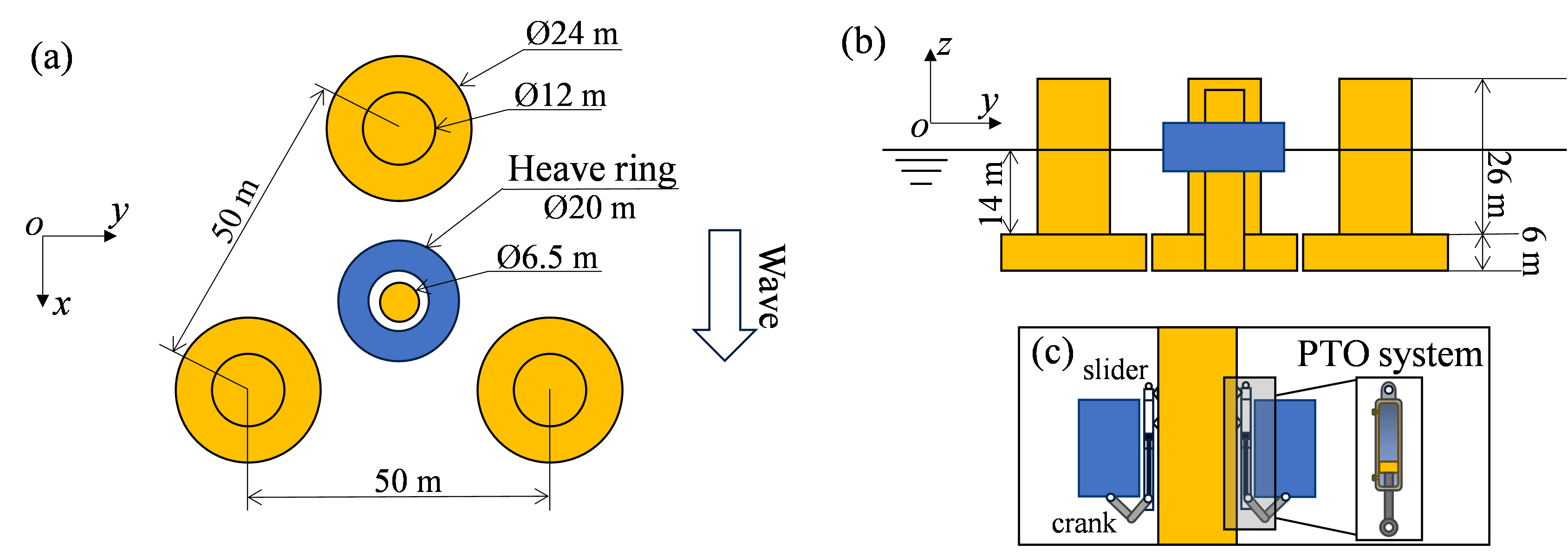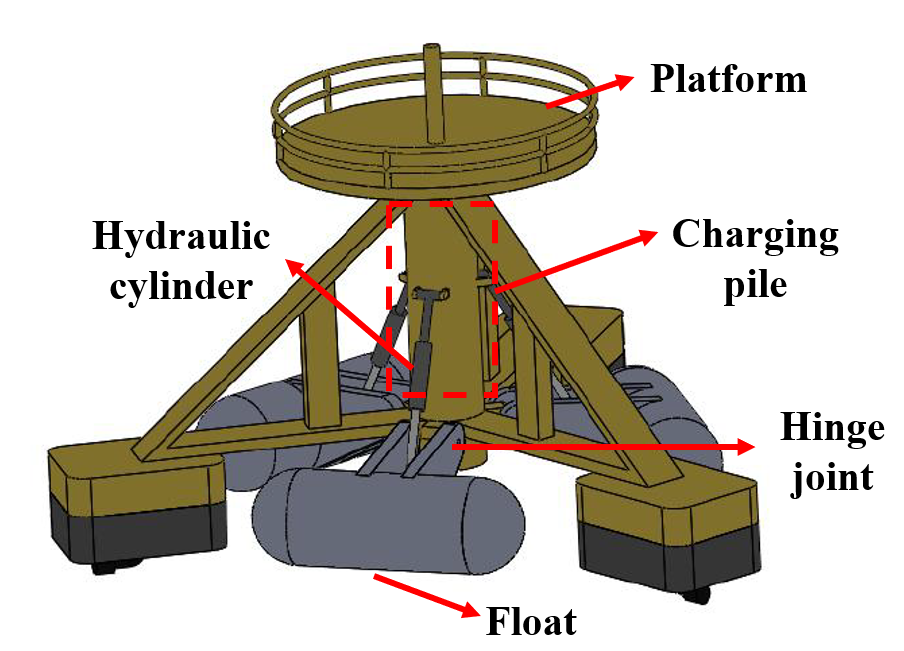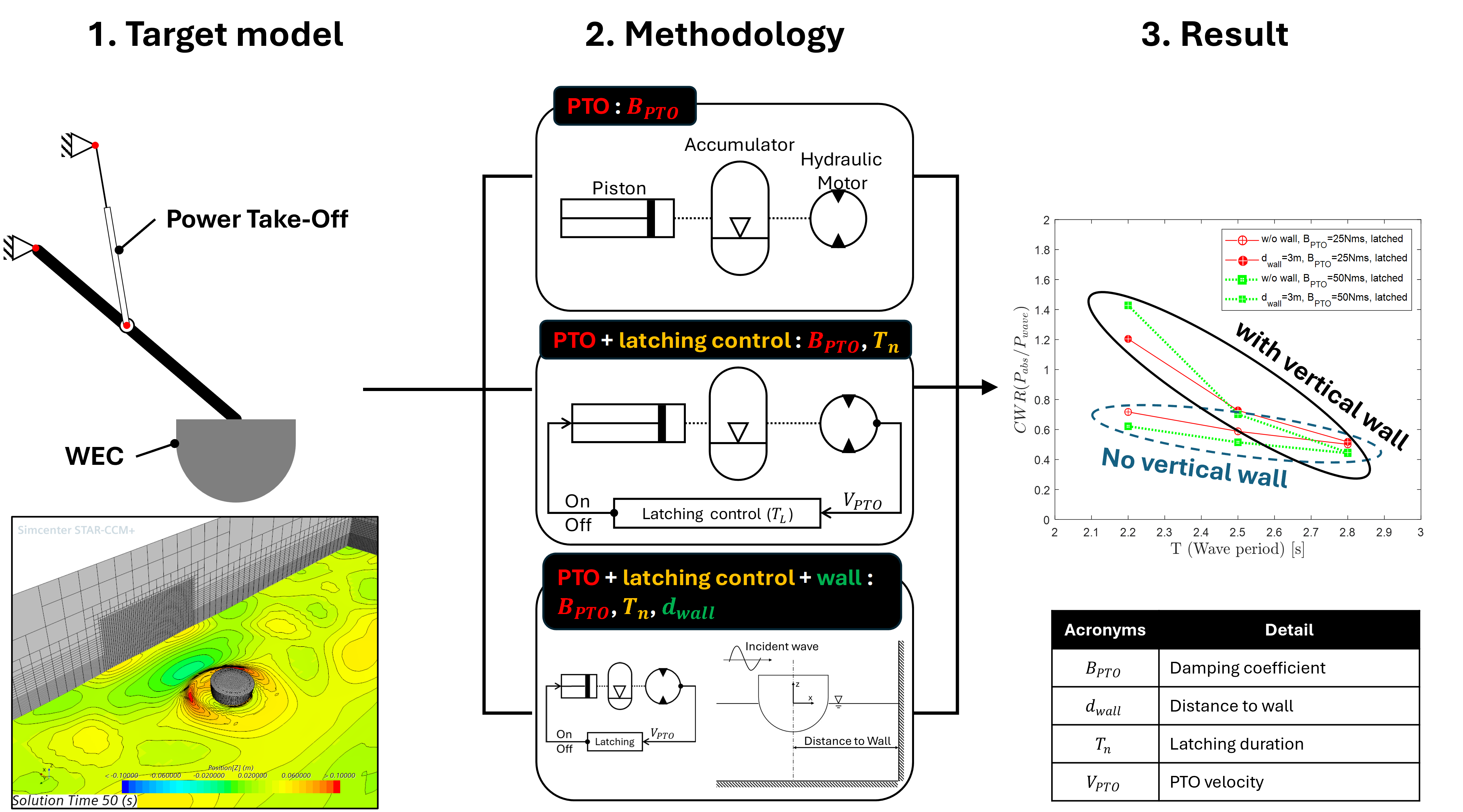Found 4 results
Review
27 March 2025State of the Art in Wave Energy Conversion Technologies in China
This paper reviews the advancements in wave energy converter technologies in China, covering device design, performance evaluation, and system control techniques. It highlights power control technologies in wave energy conversion, including adaptive control, model predictive control, clutch control, clamp control, resistive load control, approximate optimal speed control, nonlinear control, and intelligent control methods. Through an analysis of these technologies, the study outlines the future directions and challenges in wave energy development in China, while also proposing potential pathways for optimizing the performance of wave energy conversion devices.

Article
12 February 2025Motion Control of Floating Wind-Wave Energy Platforms
Mitigating wave-induced motions in floating multi-body systems is a critical challenge in ocean engineering. For single floating structures, such as floating platforms or vessels, applying active control requires considerable energy. It is also a common solution to add auxiliary structures and a power take-off (PTO) device, thereby forming a multi-body system that utilises passive control. However, the effectiveness of this method is limited due to varying phase differences between control forces and motions, which change across different wave frequencies. The present work proposes a novel semi-active structural control method, which can effectively provide optimised control force to the main body within a multi-body system. The key point of this method is tuning the phases between the forces and motions of floating bodies. Proper tuning can neutralise the main floating body’s wave-induced motion by utilising the wave-induced motion of the auxiliary structure. The controller is developed under an optimal declutching control framework, adjusting the damping coefficients of the PTO system to provide discrete resistance to the target body. A floating semi-submersible (SS) platform equipped with a heave ring as an auxiliary structure is selected and analysed as the case study. The results demonstrate the method’s efficacy in reducing motion for floating wind turbine (FWT) platforms and its applicability to various types of multiple floating bodies. Interestingly, our optimal declutching control can “kill two birds with one stone”. It can simultaneously enhance motion reduction and increase power capture. In the current study, the proposed controller achieved a maximum motion reduction of 30% for the platform.

Article
24 December 2024Hydrodynamic Performance of a Hybrid Floating Power Dock Combining Multi-Cantilever Type Buoys
This paper proposes a novel three-dimensional oscillating pendulum wave energy converter (WEC) that integrates an oscillating float dock station. The device captures wave energy by utilizing both the pitch and roll motions of its primary float and the pendular motion of a buoy. A time-domain analysis method is used to numerically evaluate the hydrodynamic behavior and energy conversion efficiency of the WEC. In ANSYS AQWA, a multi-cantilever WEC model is employed to address the fluid-solid coupling, calculating the device’s motion response and capturing the width ratio under various environmental conditions. Additionally, by modifying key geometric parameters including float radius, length, and cantilever angle, the study examines the rotation at the articulation point and the capture width ratio variation for different device configurations. Results indicate that the device achieves a maximum capture width ratio at a float radius of approximately 120 mm under T = 1.4 s, and a 130 mm for wave periods of 1.5 s and 1.6 s. The highest average capture width ratio is reached at a power take-off (PTO) damping coefficient of 400 N·s/m. The study further investigates the effect of cantilever angle and float length, aiding in the optimization of these geometric parameters.

Article
27 September 2024Numerical Investigation of a Point Absorber Wave Energy Converter Integrated with Vertical Wall and Latching Control for Enhanced Power Extraction
This study presents a numerical investigation of a point absorber wave energy converter (WEC) with a focus on improving its performance through the utilization of a vertical wall and latching control in the power take-off (PTO) system. Prior to numerical evaluations, experimental data incorporating PTO considerations and numerical simulation results were examined to validate the accuracy of the numerical methodology employed in this research. This study introduces a numerical PTO model and latching control for a further investigation. Comparative analyses were carried out on the displacement, velocity, and force of the PTO, absorbed power, and capture width ratio (CWR), considering the incorporation of a vertical wall and latching control. The results confirm that the introduction of both vertical wall and latching control significantly improves the CWR of the WEC, showing the effectiveness of incorporating a vertical wall and latching control in enhancing power extraction.
